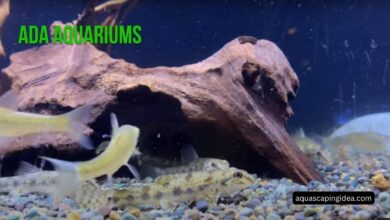How To Add Calcium To Aquarium?

In our wonderful aquarium hobby, one key building block of a successful aquarium is an aquarium ecosystem, which means our basic goal is to create and maintain a balanced and thriving aquarium environment for your underwater friends. A key player which, if omitted, adversely affects your health is CALCIUM. This crucial mineral is essential for the proper health and development of many aquatic life, from corals and invertebrates to some species of fish. If you are an experienced aquarist who wants an efficient means for calcium addition to the tank, or a newbie looking for an effective way to carbonate the system, knowing how to add calcium to aquarium water can greatly enhance the health and vibrancy of your world inside the glass.
Calcium
Unsung Hero of Aquatic Life Calcium is a versatile mineral that performs a wide variety of functions within an aquarium Calcium, in combination with carbonate, is one of the key elements utilized by stony corals and many other organisms to create their skeletons and shells. When they do not receive enough calcium, they are unable to build the calcium-based structures within them, which then leads to stunted growth, deformities and may even cause them to die.
In addition to this, calcium also helps in controlling the aquariums and its water quality and pH level. When a pH BUFFER is used in an aquarium, it will in the long run serve to buffer the system water, helping to prevent sudden and possibly harmful fluctuations in pH which can cause unnecessary stress or even outright death of sensitive aquatic inhabitants. Function and Authoritative References: Calcium also participates in numerous essential biological processes such as: osmoregulation and muscle contraction in numerous aquatic species.
Calcium Depletion in Aquariums
In a well-maintained aquarium, calcium levels over time will gradually decrease, this can occur for several reasons. marine organisms such as corals and shrimp, that are called as calcifying organisms for they continuously demand calcium to grow,contributing to the persistent removal of this vital element from the water. Similarly, some filtration media and some chemical processes have the side effect of stripping calcium from the system.
Some Symptoms of Calcium Deficiency Signs You Need To Know Stunted growth or deformities in calcifying organisms, discoloration or erosion of coral skeletons, or poor health or lethargy in aquatic inhabitants are some telltale signs. Regular monitoring of calcium and intervention when levels have been below these amounts will help you maintain a tank full of lively and healthy invertebrates.
Methods for Adding Calcium to Your Aquarium
There are several effective methods for replenishing calcium levels in your aquarium, each with its own advantages and considerations. Let’s explore these options in detail:
Calcium Supplements and Additives
-
- Calcium chloride and calcium chloride dihydrate: These readily soluble forms of calcium are easy to introduce into the aquarium and are often used for calcium reactors or dosing systems.
- Calcium hydroxide (kalkwasser): A popular choice for reef aquariums, kalkwasser is a saturated solution of calcium hydroxide that can be added directly to the aquarium or used in calcium reactors.
- Calcium reactors: These specialized devices dissolve calcium-based media (such as aragonite or calcium carbonate) and introduce calcium into the aquarium water through a controlled process.
- Calcium test kits: Regularly testing calcium levels using aquarium-specific test kits is crucial for determining the appropriate dosage of calcium supplements.
Natural Sources of Calcium
-
- Crushed coral or aragonite sand: These calcium-rich materials can be added directly to the substrate or used as filter media, slowly releasing calcium into the aquarium water.
- Calcium-rich rocks or shells: Incorporating calcium-rich rocks or shells into the aquarium decor can help replenish calcium levels over time as they slowly dissolve.
Water Changes and Remineralization
-
- Partial water changes: Regularly replacing a portion of the aquarium water with fresh, calcium-rich water can help maintain adequate calcium levels.
- Remineralizing solutions: These specialized products contain a balanced blend of minerals, including calcium, and can be added to the aquarium water during water changes or top-offs.
Table: Comparing Calcium Supplementation Methods
| Method | Advantages | Disadvantages |
|---|---|---|
| Calcium Chloride/Dihydrate | Readily soluble, easy to dose, precise control | Potential pH fluctuations, requires careful monitoring |
| Kalkwasser | Highly effective for reef tanks, buffers pH | Time-consuming preparation, potential precipitation issues |
| Calcium Reactors | Automated dosing, precise control, minimizes pH fluctuations | Expensive setup, requires maintenance and monitoring |
| Crushed Coral/Aragonite | Natural source, buffers pH, slow-release | Slower calcium release, potential for impurities |
| Calcium-rich Rocks/Shells | Natural source, decorative | Slower calcium release, potential for impurities |
| Water Changes | Replenishes multiple minerals, freshens water quality | Time-consuming, potential for parameter fluctuations |
| Remineralizing Solutions | Balanced mineral blend, convenient | Potential for overdosing, additional cost |
Maintaining Optimal Calcium Levels
After you have determined and/or selected the best way to bring your calcium level within the appropriate range, it is most important that you monitor your calcium levels occasionally and make corrections as needed as it become necessary over the weeks and months. Photo credit: Saltwater Aquarium Blog — Creative Commons Calcium test kits are a great way to effectively measure calcium concentrations, and ensure they are in the optimal range for the livestock you keep in your aquarium.
The recommended calcium level for most reef aquariums is between 400-450 parts per million (ppm). But make sure to look into the calcium requirement of the species in your aquarium as some may prefer a bit higher or lower levels than this.
Factors Influencing Calcium Uptake and Retention
While replenishing calcium is crucial, it’s equally important to understand the factors that can influence calcium uptake and retention within your aquarium ecosystem. These include:
Alkalinity and pH:
Maintaining proper alkalinity and pH levels is essential for calcium to be effectively utilized by calcifying organisms. Fluctuations in these parameters can disrupt calcium metabolism and lead to poor skeletal growth or deformities.
Magnesium levels:
Magnesium plays a synergistic role with calcium, and adequate magnesium levels are necessary for optimal calcium utilization. Monitoring and maintaining appropriate magnesium concentrations is vital.
Light intensity and quality:
For photosynthetic calcifying organisms like corals, adequate lighting is crucial for promoting calcium deposition and skeletal growth. Ensuring appropriate light intensity and spectra can optimize calcium utilization.
Water flow and circulation:
Proper water flow and circulation help distribute calcium evenly throughout the aquarium and prevent stagnant areas where calcium may accumulate or be depleted.
Nutrient balance:
A balanced nutrient profile, including trace elements and vitamins, supports overall metabolic processes and can indirectly impact calcium utilization by aquatic inhabitants.
By understanding and addressing these factors, you can create an environment that maximizes calcium uptake and retention, fostering healthy growth and development for your aquatic residents.
Conclusion
Adding calcium to your aquarium is an essential practice for fostering a vibrant and thriving underwater environment. By understanding the importance of calcium, recognizing the signs of deficiency, and implementing the appropriate supplementation methods, you can ensure that your aquatic inhabitants receive the vital nutrients they need for healthy growth and development.
Remember, maintaining optimal calcium levels is not a one-time task but an ongoing process that requires regular monitoring and adjustments. By staying vigilant and addressing calcium deficiencies promptly, you can create a balanced and thriving aquarium ecosystem that showcases the beauty and diversity of aquatic life.
Embrace the art of calcium supplementation, and unlock the secret to a flourishing underwater world that will captivate and inspire you for years to come. With patience, dedication, and the right knowledge, you can transform your aquarium into a stunning display of nature’s wonders, where calcium serves as the foundation for a vibrant and harmonious aquatic oasis.
FAQ (Frequently Asked Questions)
How often should I test calcium levels in my aquarium?
It’s recommended to test calcium levels at least once a week, especially in reef aquariums or systems with a high calcium demand. Regular testing allows you to identify and address any deficiencies or imbalances promptly.
Can too much calcium be harmful to my aquarium?
A: Yes, excessive calcium levels can be detrimental. High calcium concentrations can lead to precipitation and crystallization issues, as well as potential stress or health problems for certain aquatic species. It’s crucial to maintain calcium levels within the recommended range for your specific aquarium inhabitants.
Can I use regular tap water to add calcium to my aquarium?
While tap water may contain some calcium, the concentration can vary significantly depending on your local water source. It’s generally recommended to use purified or reverse osmosis (RO) water and supplement with a dedicated calcium source to ensure precise and consistent calcium levels.
How does calcium affect the pH in my aquarium?
Calcium can act as a buffer, helping to stabilize pH levels in the aquarium. However, certain calcium supplementation methods, such as calcium chloride, can cause temporary pH fluctuations. Monitoring and adjusting pH levels accordingly is essential when adding calcium to your aquarium.
Can I use calcium supplements intended for human consumption in my aquarium?
It’s not recommended to use calcium supplements formulated for human consumption in your aquarium. These products may contain additional ingredients or fillers that can be harmful to aquatic life or disrupt the delicate aquarium ecosystem. Always use calcium supplements specifically designed for aquarium use.




